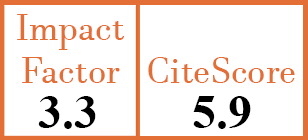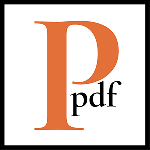Full Papers
Comparison and clinical analysis of tissue-specific autoantibodies levels in primary Sjögren's disease and other connective tissue diseases
Z.M. Wang1, Y.S. Yang2, X. Qi3, Y. Zhang4, X.P. Wang5, J.L. Li6, Z.Z. Huang7, H.F. Guo8, L.X. Gao9
- Department of Rheumatology and Immunology, the Second Hospital of Hebei Medical University, Shijiazhuang; and Department of Rheumatology and Immunology Affiliated Hospital of Hebei University, Baoding, Hebei Province, China.
- Department of Rheumatology and Immunology, the Second Hospital of Hebei Medical University, Shijiazhuang, Hebei Province, China.
- Department of Rheumatology and Immunology, the Second Hospital of Hebei Medical University, Shijiazhuang, Hebei Province, China.
- Department of Rheumatology and Immunology, the Second Hospital of Hebei Medical University, Shijiazhuang, Hebei Province, China.
- Department of Rheumatology and Immunology, the Second Hospital of Hebei Medical University, Shijiazhuang, Hebei Province, China.
- Department of Rheumatology and Immunology, the Second Hospital of Hebei Medical University, Shijiazhuang, Hebei Province, China.
- Kessler Biopharmaceutical Yangzhou Co., Ltd, Yangzhou, Guangdong Province, China.
- Department of Rheumatology and Immunology, the Second Hospital of Hebei Medical University, Shijiazhuang, Hebei Province, China.
- Department of Rheumatology and Immunology, the Second Hospital of Hebei Medical University, Shijiazhuang, Hebei Province, China. 27100287@hebmu.edu.cn
CER18762
Full Papers
Free to view
(click on article PDF icon to read the article)
PMID: 41042717 [PubMed]
Received: 27/03/2025
Accepted : 25/07/2025
In Press: 02/10/2025
Abstract
OBJECTIVES:
This study investigates serum levels of anti-parotid secretory protein (PSP), anti-salivary gland protein 1 (SP1), and anti-carbonic anhydrase 6(CA6) antibodies in primary Sjögren’s disease (pSjD) and other connective tissue diseases (CTDs), further to evaluate their clinical relevance.
METHODS:
The study enrolled 60 patients diagnosed with pSjD, along with 30 disease controls (DC) suffering from various CTDs and 30 healthy controls (HC) for comparison. The serum levels of anti-PSP, anti-SP1, and anti-CA6 antibodies were measured using chemiluminescent immunoassays. Statistical analyses were performed using SPSS 27.0, including ANOVA, nonparametric tests (Kruskal-Wallis H and Mann-Whitney U), and Spearman correlation.
RESULTS:
The Patients with pSjD showed significantly higher serum levels of anti-CA6 immunoglobulin G (IgG), anti-PSP IgG/IgA, and anti-SP1 IgG than the DC and HC groups (p<0.05). These antibodies have a certain predictive accuracy in pSjD. The IgG subtype of anti-CA6, anti-PSP and anti-SP1 had a positive correlation with the erythrocyte sedimentation rate (ESR) and IgG in clinical correlations aspect. The levels of anti-CA6 IgG and anti-PSP IgG increased significantly with the severity of labial gland pathology (p<0.05). The subgroups that were positive for anti-SSA52KD(Ro52)/SSA60KD(Ro60)/SSB(La) exhibited higher levels of anti-CA6 IgG and anti-PSP IgG than their seronegative counterparts (p<0.05), while positivity for anti-centromere antibody (ACA)was linked to lower levels of anti-CA6 and anti-PSP IgG.
CONCLUSIONS:
Anti-CA6, anti-PSP and anti-SP1 antibodies show diagnostic value in pSjD, with elevated IgG levels reflecting disease progression, histopathological damage, and distinct autoantibody interactions, implicating their pathogenic contributions.


